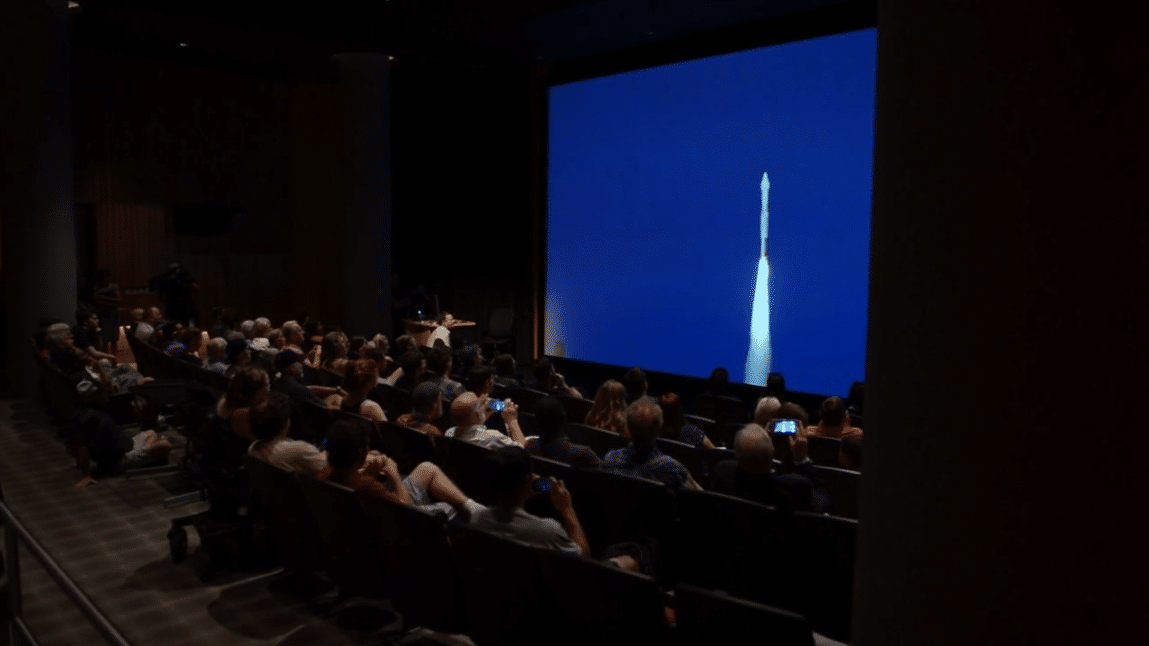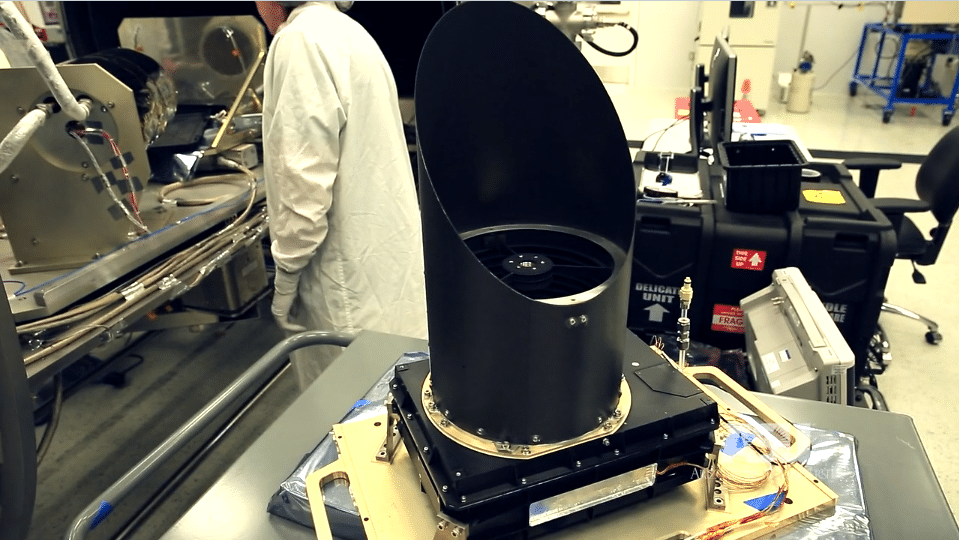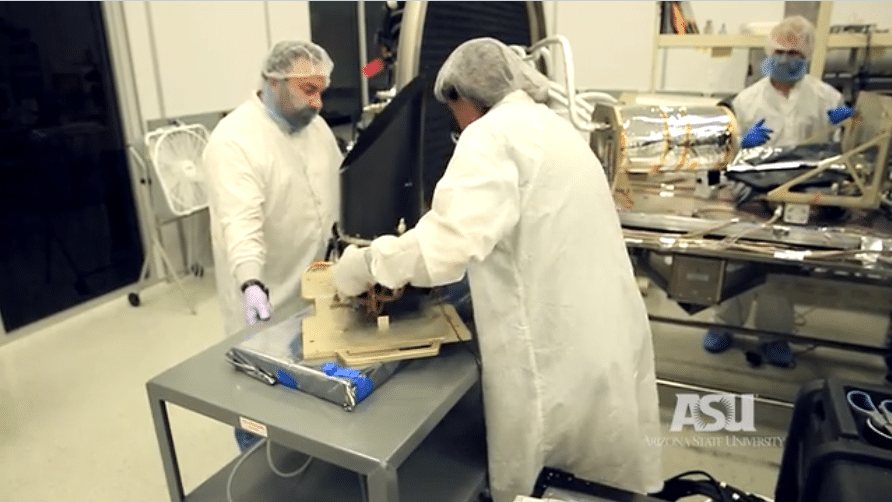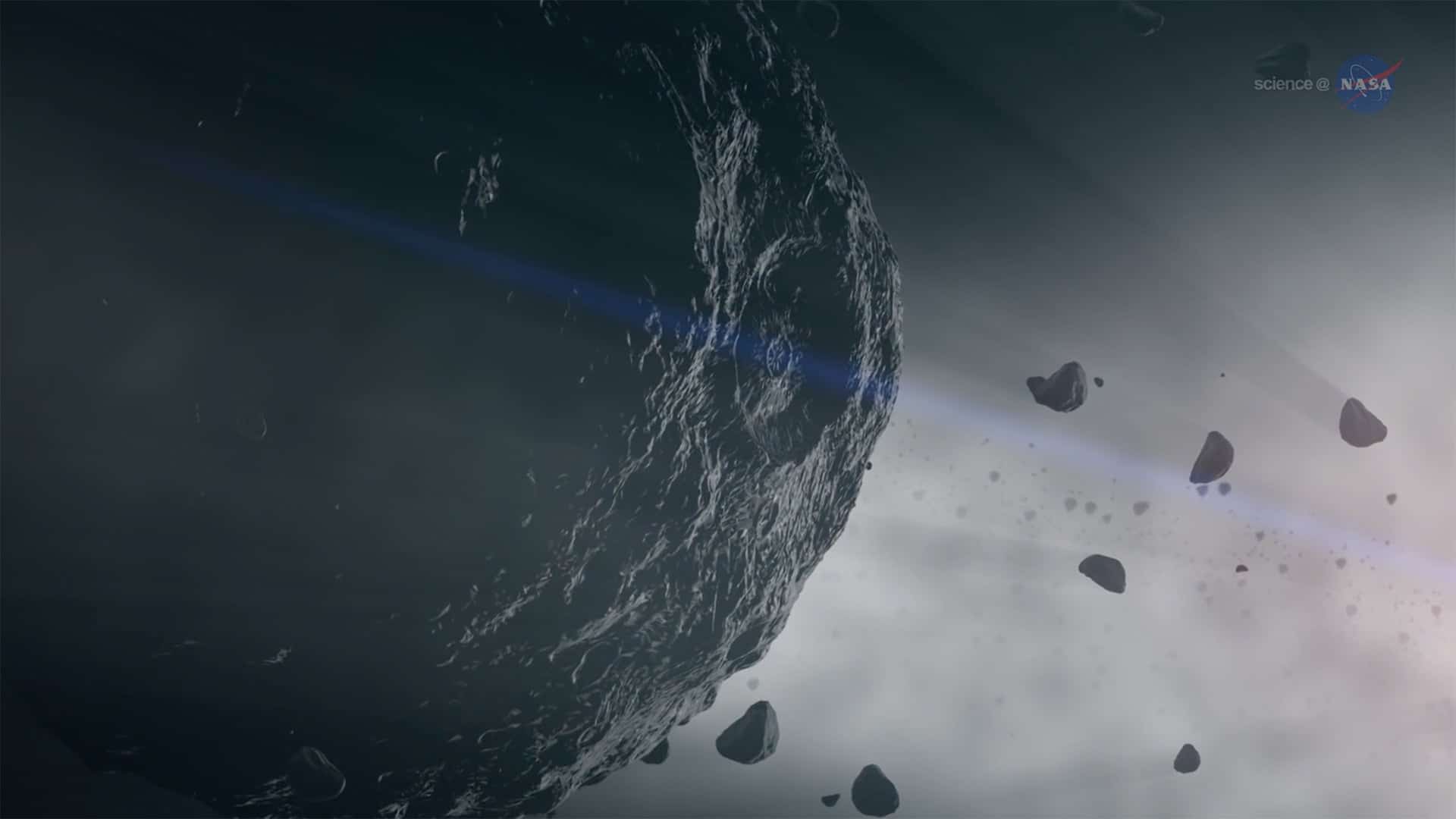What is it?
The OSIRIS-REx Thermal Emission Spectrometer, OTES for short, is an instrument on board NASA’s OSIRIS-REx spacecraft. With a design heritage from two previous infrared spectrometers, OTES is a robust and proven instrument for operations at asteroid Bennu.
What does it do?
The OSIRIS-REx Thermal Emission Spectrometer (OTES) provides mineralogical and thermal emission spectral maps and local spectral information of candidate sample sites by collecting thermal infrared data from 4 to 50 micrometers.
Why is it significant?
Bennu is believed to be a primitive asteroid, thus offering scientists a chance to examine a carbon-rich object that may be little changed from the early solar system.
Highlights
Frequently Asked Questions
- What is OTES?
OTES is a thermal emission spectrometer. It detects thermal (heat) emission from the surface materials of asteroid Bennu at a variety of infrared wavelengths. The data from OTES lets scientists determine what minerals are present and measure the temperature of the surface.
Meet the Group
PRINCIPAL INVESTIGATORS
- Phil Christensen, OTES Instrument Scientist
- Arizona State University
- Vicky Hamilton, Deputy Instrument Scientist
- Southwest Research Institute
ENGINEERING TEAM
- Saadat Anwar, Software Engineer
- Arizona State University
- Heather Bowles, Configuration Management
- Arizona State University
- Stillman Chase, System Engineer
- Arizona State University
- John Fahlgren, Mission Assurance Engineer
- Arizona State University
- Zoltan Farkas, Mechanical Engineer
- Arizona State University
- Tara Fisher, Administrator
- Arizona State University
- Greg Mehall, Project Engineer
- Arizona State University
- Mark Miner, Thermal Engineering
- Arizona State University
- William O'Donnell, Opto/Mechanical Engineer
- Arizona State University
- Dan Pelham, Opto/Mechanical Engineer
- Arizona State University
- Sam Pellicori, Optical Engineer
- Arizona State University
- Nick Piacentine, IT Manager
- Arizona State University
- John Robinson, Mission Assurance Advisor
- Arizona State University
- Steve Ruff, Instrument Calibration
- Arizona State University
- Lisa Schulze, Procurements
- Arizona State University
- Ken Shamordola, Electrical Engineer
- Arizona State University
- Tom Torville, Mechanical Design Engineer
- Arizona State University
- Tom Wolverton, Structural Engineer
- Arizona State University
- Robert Woodward, Manufacturing Engineer
- Arizona State University
- Gates West, Lead Electrical Engineer
- Moog Broad Reach Co.
- Orson John, Reliability Engineer
- NASA Goddard Space Flight Center
POST DOC
- Chris Haberle
- Arizona State University
- Andy Ryan
- University of Arizona



